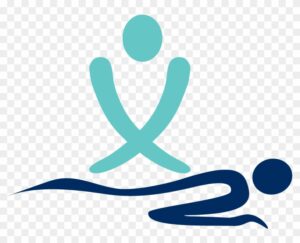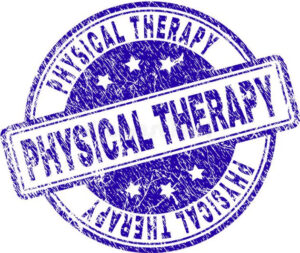Massage Therapist Austin TX – Physical and Manual Physiotherapy Near Westlake Hills
F.A.Qs
Swedish massage is a gentle full-body massage that’s great for people who are new to massage, want to release tension, desire gentle touch.
Hot stone massage is best for people who have muscle pain and tension or who simply want to relax.
This type of therapeutic massage is similar to a Swedish massage, only the massage therapist uses heated stones in lieu of or in addition to their hands.
Aromatherapy massages are best for people who enjoy scent and want to have an emotional healing component to their massage. This type of massage can help boost your mood, reduce stress and anxiety, reduce symptoms of depression, relieve muscle tension, relieve pain.
Deep tissue massage uses more pressure than a Swedish massage. It’s a good option if you have muscle problems, such as soreness, injury, imbalance, tightness, chronic muscle pain.
Sports massage is a good option if you have a repetitive use injury to a muscle, such as what you may get from playing a sport. It’s also a good option if you’re prone to injuries, because it can be used to help prevent them.
Sports massage can increase flexibility, improve athletic performance, relieve pain, reduce anxiety, release muscle tension.
Trigger point massage is best suited for people who have injuries, chronic pain, or a specific issue or condition.
Sometimes, areas of tightness in the muscle tissues, known as trigger points, can cause pain in other parts of the body. By focusing on relieving trigger points, this type of massage can reduce pain.
A 2018 review found that treatment of head and neck muscles with trigger point therapy may reduce frequency, intensity, and duration of tension and migraine headaches, though more research is needed. (https://www.healthline.com/health/types-of-massage)
A physical therapy technique involving the hands, manual therapy does not use any outside devices for treatment.
The hands can provide pressure to muscles and connective tissue, with emphasis on the back and neurovascular system, or manipulate joints to restore functionality. The goal is to address the root of musculoskeletal pain and provide patients a degree of relief. (https://integrehab.com/blog/physical-therapy/manual-therapy/)
When manual therapy (the “stimulus”) is applied to a certain part of your body (the “tissue”), the immediate effect is decreased spasm of the muscles in the area and increased motion.
This stimulus being applied sets off a cascade of effects, starting with the “peripheral nervous system” (all of the nerves in your body besides those in your spinal cord and in your brain). An effect of this stimulation is that cells that help attack inflammation are sent to that area (“inflammatory mediators”).
Then, the information is sent to the main nerve conduction track between your body and your brain (the “spinal cord”). From here, a whole host of proposed effects occurs, including improved muscle activity of the area that was worked on and decreased pain (“hypoalgesia”).
After the information gets to the spinal cord, a feedback loop with the brain begins, which includes changes related to pain, involuntary nervous system (“autonomic”) responses such as changes in stress hormone levels, heart rate, and skin temperature, endorphin and opioid responses (the “feel-good” hormones), and psychological responses to the treatment including expectation and the placebo effect. (https://tomsicpt.com/2017/01/26/mechanisms-manual-therapy/)
Physical therapy (PT), also known as physiotherapy, is one of the allied health professions. It is provided by physical therapists who promote, maintain, or restore health through physical examination, diagnosis, management, prognosis, patient education, physical intervention, rehabilitation, disease prevention, and health promotion. Physical therapists are known as physiotherapists in many countries.
In addition to clinical practice, other aspects of physical therapist practice include research, education, consultation, and health administration. Physical therapy is provided as a primary care treatment or alongside, or in conjunction with, other medical services. In some jurisdictions, such as the United Kingdom, physical therapists have the authority to prescribe medication. (https://en.wikipedia.org/wiki/Physical_therapy)
Physiotherapy treatment is basically the same as Physical Therapy. Where you are in the world determines which term is used more.
Physiotherapy helps to restore movement and function when someone is affected by injury, illness or disability. It can also help to reduce your risk of injury or illness in the future.
It takes a holistic approach that involves the patient directly in their own care.
When is physiotherapy used?
Physiotherapy can be helpful for people of all ages with a wide range of health conditions, including problems affecting the:
bones, joints and soft tissue – such as back pain, neck pain, shoulder pain and sports injuries
brain or nervous system – such as movement problems resulting from a stroke, multiple sclerosis (MS) or Parkinson's disease
heart and circulation – such as rehabilitation after a heart attack
lungs and breathing – such as chronic obstructive pulmonary disease (COPD) and cystic fibrosis. (https://www.nhs.uk/conditions/physiotherapy/)
We offer physical therapy, physiotherapy, manual and massage therapist treatments to West Lake Hills, Rollingwood, Bee Cave, Tarrytown, Lost Creek, Barton Creek and the rest of Austin TX.
How to get from Westlake Hills to Axiom Physiotherapy for Massage, Physical or Manual Therapy in Austin TX.




